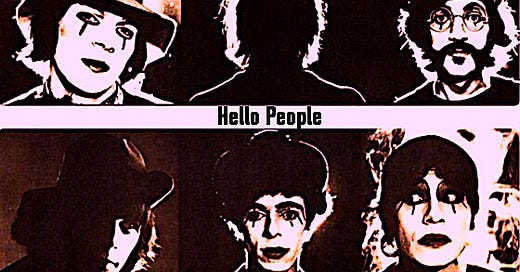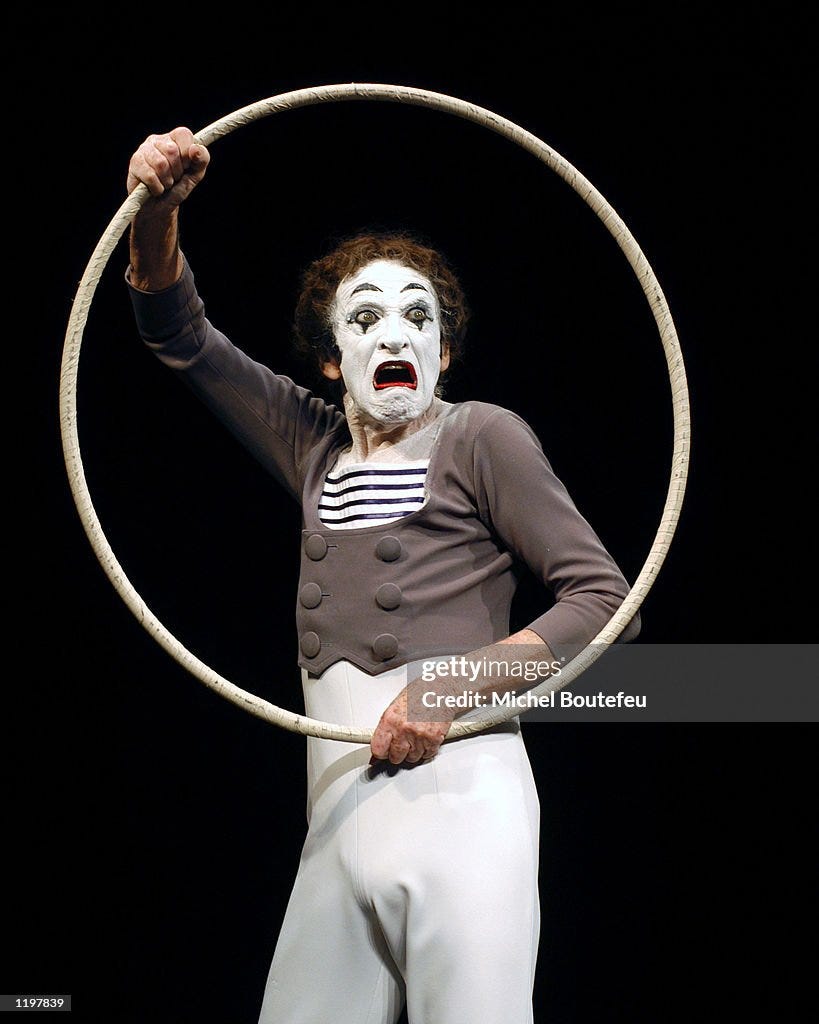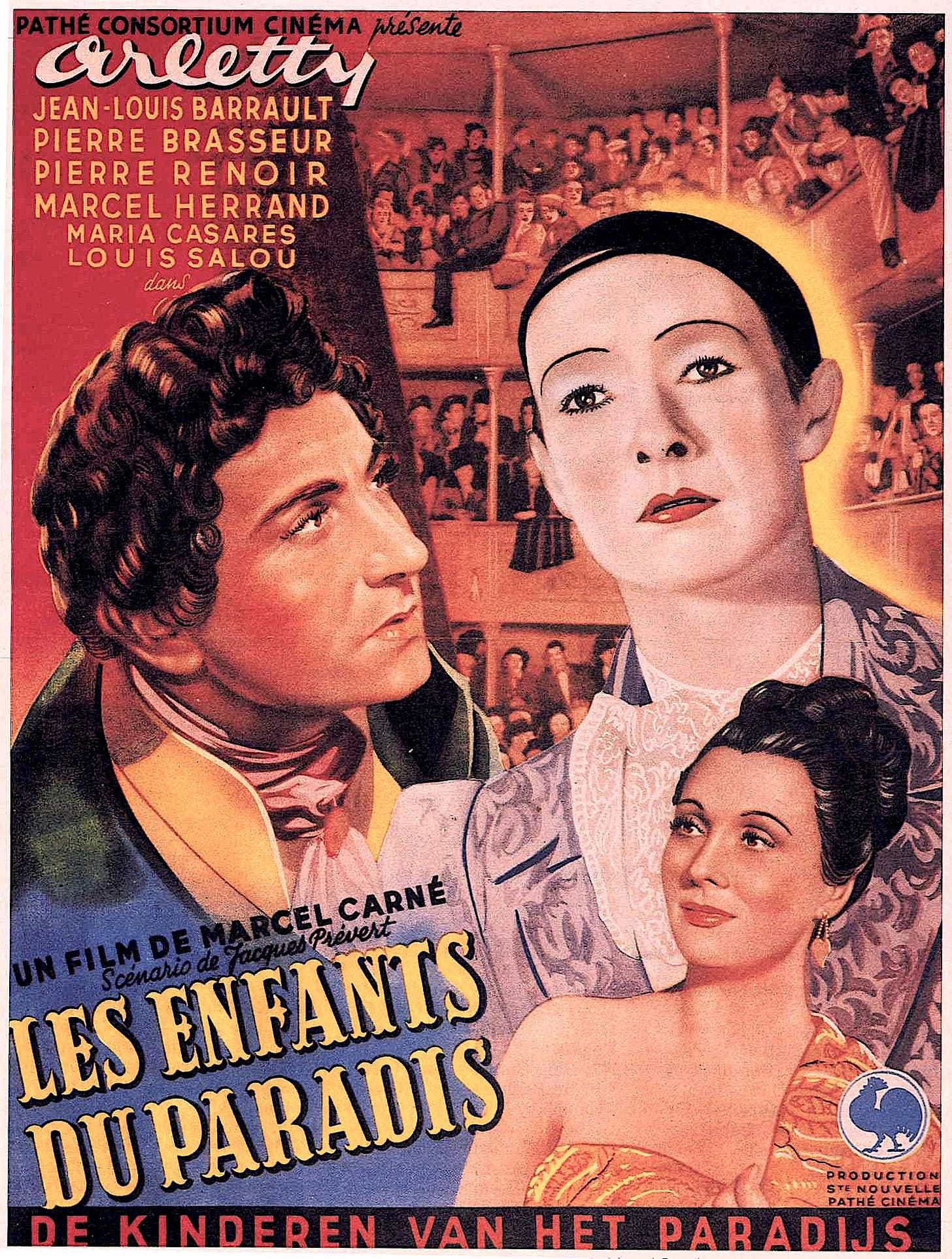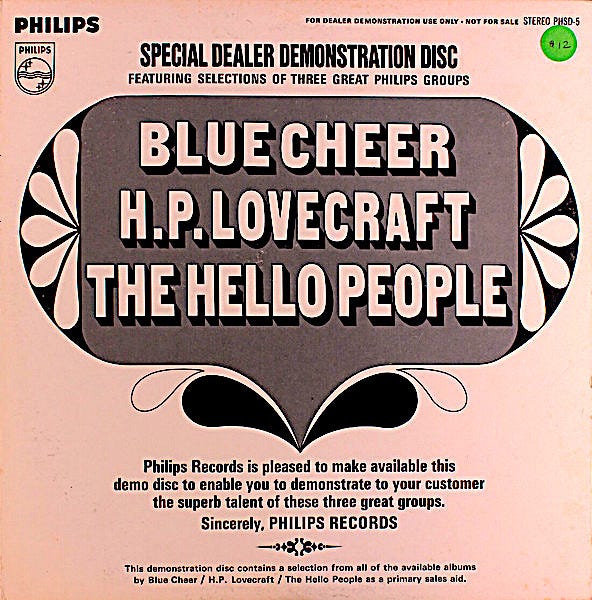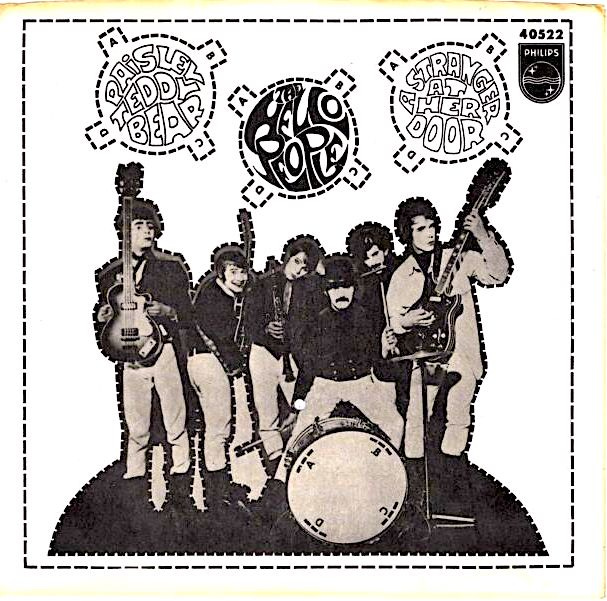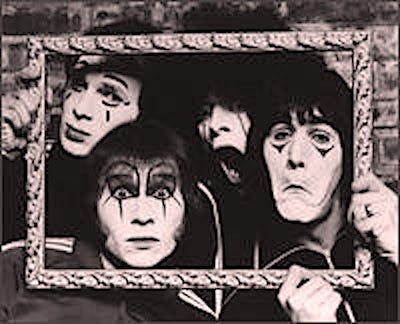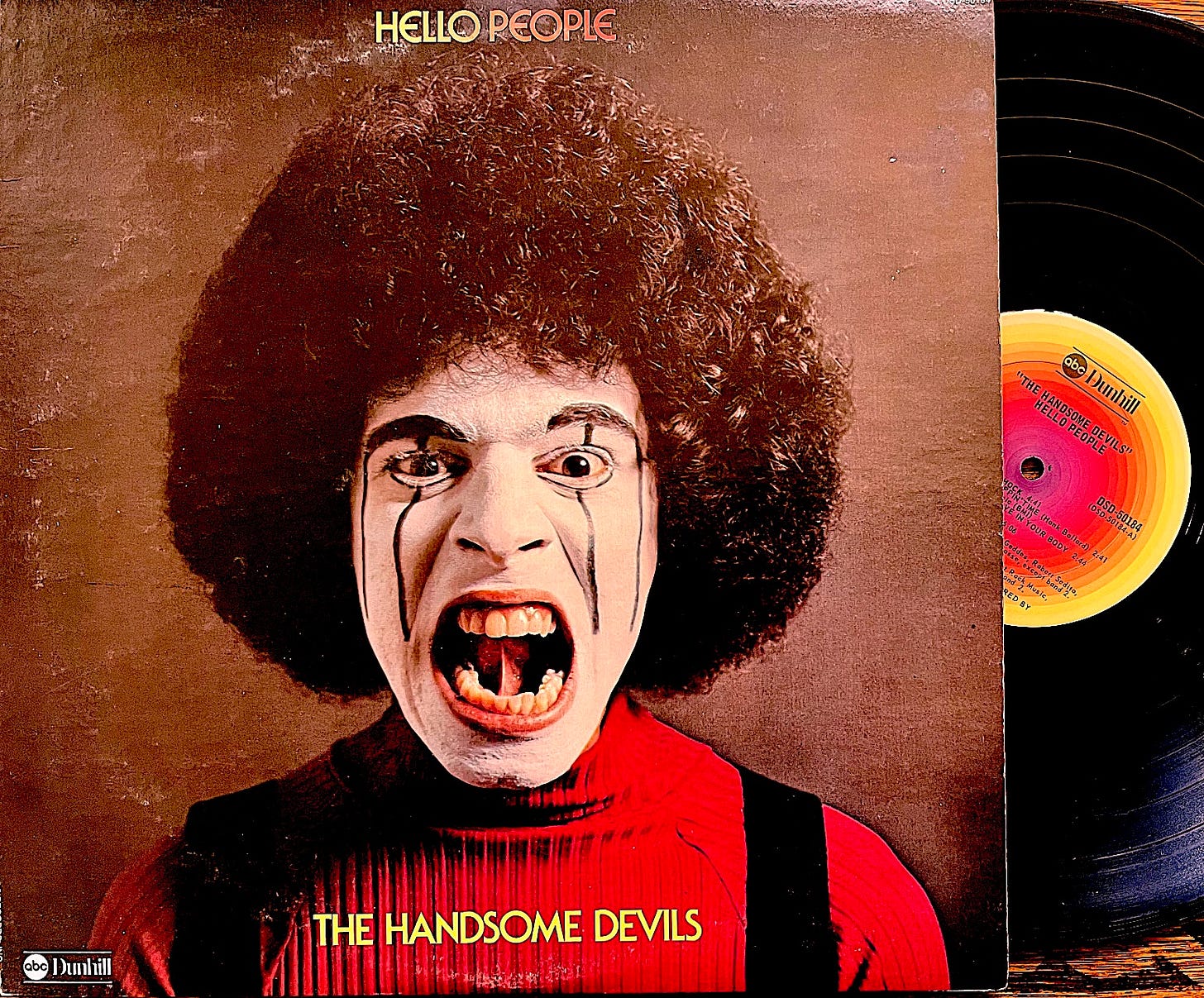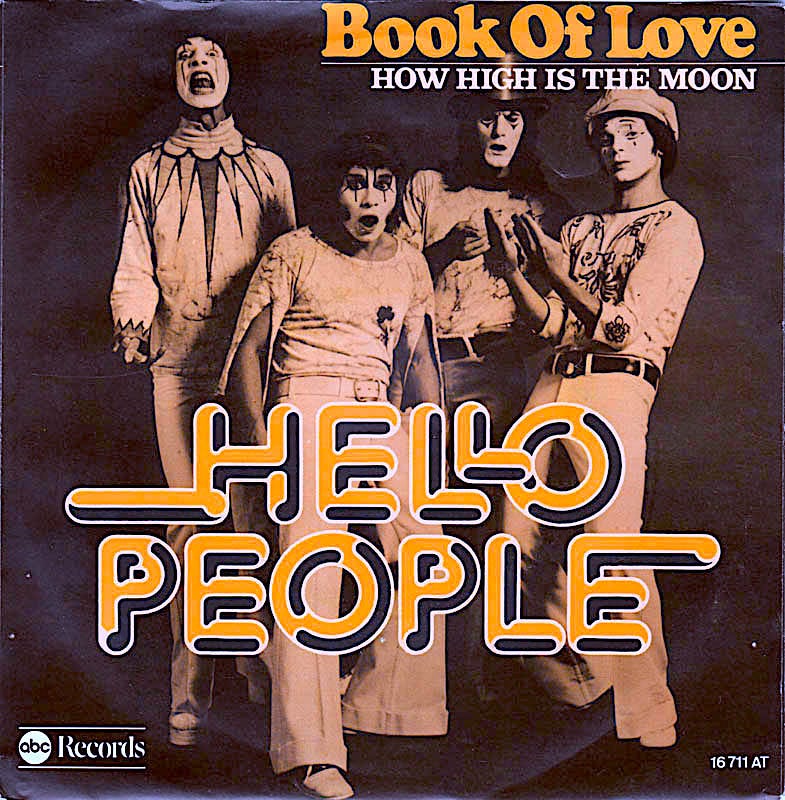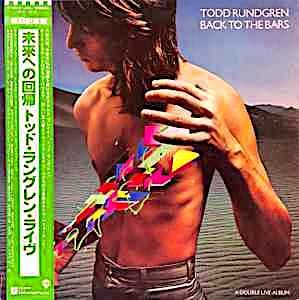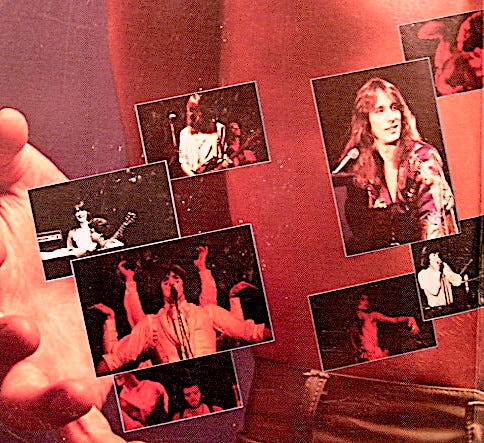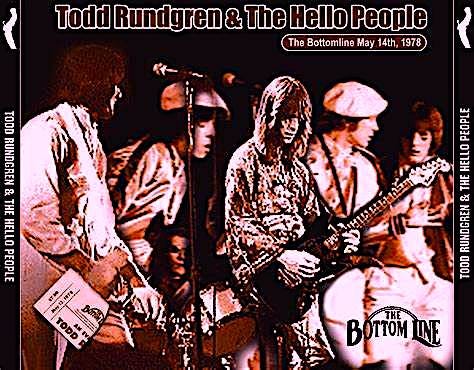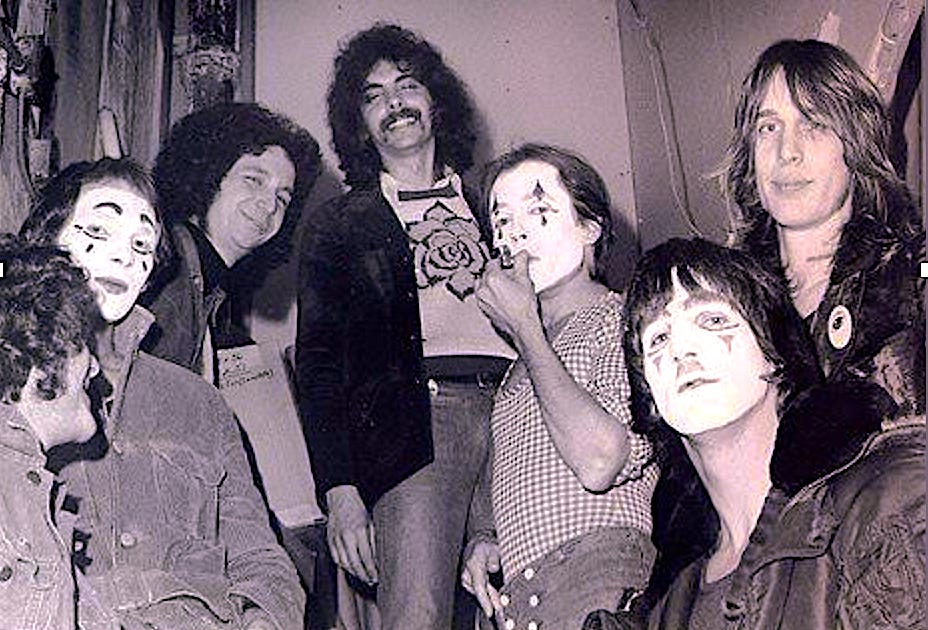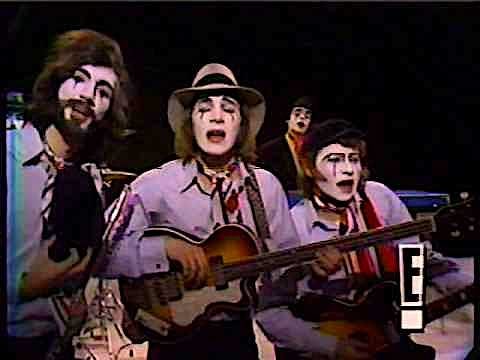Culture exploded in the 1960s, in part because of a world in turmoil over The Vietnam War and the fight for Civil Rights. It was also a renaissance period for fashion, film, media, spirituality, and technology, when they all bled together into exciting new hybirds. The Beatles and other music acts rose up through the conventions of radio, television, and record sales, but they enlarged their musical ideas through unconventional fusions with movies, edgy humor, and cross-cultural instrumentation.
As other music acts explored diverse multi-media expressions, The Hello People were unique for their use of mime, the French art form of actors in face paint expressing themselves with no speech, just motion.
The legendary French mime actor Marcel Marceau was no stranger to mainstream American TV and stage, which set the stage for a mime group concept to be created in 1967 in New York by producer Lew Futterman, whose credits included George Benson, r’n’b singer J.J. Jackson, and jazz organ icon Brother Jack McDuff.
Futterman was inspired by Marcel Carné's film Children of Paradise (Les Enfants du Paradis). Etienne De Crux, the father of French mime, plays the part of Bapties's father in the film.
In the 60s De Crux taught painting to a group of musicians in New York. Since these musicians learned to paint so quickly, De Crux reasoned that musicians could also learn mime and apply it to other forms. Futterman, manager of the musicians De Crux taught, recruited a new group of musicians from the greater New York area, assigning them to perform in mime makeup and do mime routines between songs, never speaking a word to the audience. As Hello People co-founder Larry Tasse put it, “The inequities and cruelties of the world made us speechless. Since we couldn’t find words for it, we just played our music with lyrics to address and protest the problems. We were about civil rights, social conciousness, and spiritual awareness.”
The Hello People’s mime look augured the theatrics of David Bowie, Alice Cooper, Bob Dylan (during his Rolling Thunder period), Peter Gabriel, The Insane Clown Posse, 70s-era Mick Jagger, Leo Sayer, and Split Enz. Or, as expressed in 2015 on the Dangerous Minds blog, “Before there was KISS, there was ‘mime rock’—Say hello to The Hello People.”
Musically, The Hello People sat between The Association, and The Rascals for their vocal melodicism and a progressive mix of jazz rock, susnshine pop, psychedelia, and soul—with shades of 50s doo-wop, garage rock, and folk, extending from their roots on the Greenwich Village club circuit.
The original line-up was:
W. S. "Sonny" Tongue - vocal, guitar (stage name "Country")
Greg Geddes - bass, vocal (stage name "Smoothie")
Bobby Sedita - guitar, vocal (stage name "Goodfellow")
Larry Tasse - keyboards, vocal (stage name "Much More")
Michael Sagarese - flute (stage name "Wry One")
Ronnie Blake - drums (stage name "Thump Thump")
In late 1967 they signed to Philips Records, then a major international label.
Philips released the single “Let’s Go Hide in the Forest” b/w “Disparity Waterfront Blues,” presented here in a TV clip:
It didn’t chart, but their eponymous debut LP and the singles “Paisley Teddy Bear” and the energetic “As I Went Down to Jerusalem” fared better on emerging hipster FM radio.
Their wry titles and innovative songcraft was built on a tight rhythm section and Tasse’s colorful keyboard layering. Their economic but punchy guitar parts quoted West Coast psychedelia and The Byrds circa “8 Miles High.” In another unorthodox move, Sagarese’s outstanding flute-work was at the front of the mix (months later Ian Anderson championed flute’s lead role in rock with Jethro Tull). Today the first Hello People LP is named as a chamber pop touchstone, drawing comparison to similar works by Free Design and The Left Banke.
Concurrently, Hello People began touring in major venues, opening for Big Brother & The Holding Company, Blood Sweat & Tears, and The Monkees (filling in for Jimi Hendrix who’d famously just quit a share bill tour with The Monkees).
In 1968 George Abruzzese took over drums from Blake (who left to join psychedelic folk group Bo Grumpus with Felix Pappalardi of Cream/Mountain fame). Then guitarist Peter Weston replaced Tongue, who’d decided he’d only work as a non-touring songwriter and studio technician. The new HP line-up entered the studio to record their celebrated album, FUSION. It upgraded the template of their debut, with more cogent songwriting and clearer production as engineered by Bill Szymczyk, later renowned for mixing The Eagles, James Gang, and Joe Walsh.
FUSION opened with the haunting “White Winged Dove,” a fan favorite penned by Weston. The track shimmers with brooding vocals, tremolo guitar, elegant harpsichord, and dark flute, on par stylistically with The Moody Blues (another band that used flute as a lead instrument). Sagarese’s reed work soared on “Jelly Jam,” a jazz instrumental that would fit in a caper film soundtrack (it was later covered by Jack McDuff). While FUSION was loaded with novel and prime cuts, “Anthem” was the single that charted and drew the most attention. It was Tongue’s autobiographical telling of his earlier imprisonment for draft evasion.
Tongue also wrote “If I Should Sing Too Softly,” a sequel of sorts to “Anthem.” Other parts of the album drew comparisons to Bob Dylan (“How Does it Feel to be Free?”) and the good-time folk rock eclecticism of The Lovin’ Spoonful.
Hello People appeared on major network TV programs like Johnny Carson’s Tonight Show (Johnny liked them) and The Smothers Brothers Comedy Hour.
The Smothers were notoriously outspoken about anti-war free speech, and they booked Hello People to perform “Anthem.” The song gained more radio play but was suddenly banned in Atlanta, Cleveland, and Memphis. Philips withdrew the single, but Hello People had already connected with the counter-culture crowd.
Philips (soon to become a classical-only label) dropped Hello People and other pop/rock acts. Abruzzese quit and the band reorganized in Los Angeles. They added new drummer N.D. Smart, formerly with Gram Parsons, Mountain, The Remains, and Ian & Sylvia’s Great Speckled Bird, a project produced by Todd Rundgren, who’d soon take more of an interest in Hello People. Their tight, new line-up signed to Mediarts, a small label whose roster included Spencer Davis, Don McLean, and Dory Previn.
In 1971 Hello People released the HAVE YOU SEEN THE LIGHT?—a solid album with a sophisticated Bread-like flavor plus dabblings in country rock and funky soul.
They balanced their introspective and social conscious sides with fun motivational songs. The record benefitted from fresh production by Jay Senter (Bill LaBounty, Helen Reddy), mixed by long-time Gold Star Studio engineer Doc Siegel, whose credits included Buffalo Springfield, Tim Hardin, Hugh Masakela, and other notables. One critic said the album is a refraction on GODSPELL, the trending Jesus Rock musical. Some HP fans say it’s their favorite LP, but Mediarts had little promotional muscle, and the single “Pass Me By” failed to chart.
Meanwhile, they toured non-stop, sharing bills with comedians George Carlin and Richard Pryor (even doing a show with crooner Rudy Vallee), then breaking out as an opener for Todd Rundgren, the maverick rock star, producer, and wizard of songcraft and technology.
He added them to his touring group (with George Kiernan as an extra sign-holding mime). Then Weston and Sagarese left, making Hello People a four-piece unit for the remainder of its days.
In 1974 they got a surprise boost via a TEAC instructional LP that showcased them with folk 12-string guitar hero Dick Rosmini and future Beach Boys engineer Jeff Peters. TEAC was an industry leader for multi-track recording and was promoting their 4-track tape machines, then the rage of small studios (Rundgren used one for backing tracks in concert). The Hello People described their creative process, using their song “Creego” as an example. To this day, studio engineers still reference that LP and the band on this basis.
Now signed to ABC Dunhill Records, their next record was made in the shadow of “Ziggy Stardust,” when rock’n’roll revivalism, glam, glitter, and cosmic rock were in vogue, and the band’s visuals and style folded right in. The new project was called HANDSOME DEVILS, with the cover featuring a fully made up Tasse appearing to bite your face off in full Insane Clown Posse mode.
The music was lovingly produced and engineered by Rundgren, who wrote in the liner notes, “A band that has outlasted most other American bands since '67 has so much history that, obviously, something else makes them still worth recording in '74."
Rundgren always had one hand on the avant-garde and the other on a pop jugular, producing music with a futuristic-retro sheen. He shared those affinities with Hello People, who opened the album with the calypso-electronica of “Future Shock,” their first single to chart since “Anthem.” The album was a wonderland of organic instrumentation reinvented through wild processes. They also dialed up old school soul and doo-wop, doing sturdy covers of “Fingerpoppin’ Time,” “Cry Baby,” and “Book of Love” (released internationally as a single).
Rundgren played parts and had them cover his anthemic “Just One Victory,” also released as a single (arguably the remake is superior to the original).
Everyone dazzled on the rock-soul workout “Ripped Again” and the evocative “Destiny.”
The band’s songwriting was more unified, and their harmonies were at a Beach Boys/Doobie Brothers level of power. Some even said HANDSOME DEVILS could be a companion work to Rundgren’s landmark INITIATION album.
Their 1975 LP, BRICKS, was a logical extension of teaming with Rundgren, and it may have even been a stronger production. They did a soulful cover of Rundgren’s “It Wouldn’t Have Made Any Difference” that could’ve play-listed next to Ambrosia and Little River Band.
Other fan favorites include the art-blues “Dinosaur” and the upbeat synth-driven funky instrumental “Faces.” The band was tip-top condition, but despite being on the Rundgren bandwagon and having a strong fan base, ABC dropped them.
Undaunted, they continued touring and were very involved on Rundgren’s 1978 BACK TO THE BARS live double album, joined by Spencer Davis, Rick Derringer, Hall & Oates, Stevie Nicks, and the band Utopia.
In 1979 the mercurial Rundgren amicably parted ways with Hello People, now adrift but with one more album to make—the appropriately titled LOST AT SEA.
It was released on ADC Records, a vanity label affiliated with Mike Love of The Beach Boys. Label mates included Celebration (a Beach Boys splinter group) and jazz legend Charles Lloyd.
Musically, the record held some of the excitement of the Rundgren years with artful gospel-inflected pop/r’n’b that could’ve played next to Michael McDonald and Steely Dan. They also paid homage to current trends with the slightly disco “Dancing Lady” and New Wave swagger in “20th Century America.” Their songwriting and musicianship were still rock solid (the guitars and keyboards blaze), and the production (by Greg Geddes and Jeff Peters) was admirable—all this and a lovely cover of “Walk Away Renee.”
ADC, however, did no promotion and barely distributed it. Even fans had a hard time finding the LP. The album cover showed only a photograph of a seashore—odd for a band whose visual image was their trademark.
At this point in time, mime had become a passe (almost stigmatized) art form. Many pop/rock acts used mime make-up and its derivations, but only The Hello People developed “mime rock” as a sub-genre. By 1980 they removed their make-up and disbanded, moving on in a music world dominated by disco, punk/New Wave, and stadium rock.
Keyboardist Larry Tasse went on to become an award-winning sound designer for theatre, and he continues to compose and record. N.D Smart is still a session drummer, and other band members went into engineering and production—Peter Weston opened a major studio in San Francisco and mixed a “who’s who” including Flamin’ Groovies, The Grateful Dead, Van Morrison, Quicksilver Messenger Service, Santana, and Sly & the Family Stone. Strangely, the mega-talented reedman Michael Segarese has left no trail other than a collaboration with Jack McDuff and, sadly, Sonny Tongue is no longer with us.
Summing up the legacy of Hello People, critic Fred Thomas wrote in All Music Guide: “While the late '60s were one of America's most celebrated and colorful eras for the development of rock music...The Hello People are one of the more interesting also-rans (of the era)...(they) reached out in several directions at once to cash in on various musical trends at the inception of the Summer of Love. Watching mimes tune in, turn on, and drop out...with decades of hindsight, (their) various attempts at counterculture significance...are pleasantly comical, surprisingly inspired, and often weirdly deep...(having) weight and feel enjoyably odd as tuneful reminders of strange days past.”
For decades, The Hello People were filed as a Todd Rundgren sidebar and a curio for seekers of pop/rock rarities. Then, in 2013, the FUSION album was reissued on CD and there was new buzz for the group. Die-hard fans posted on blogs, social media, and Youtube, and The Hello People story underwent a critical reappraisal.
Showbiz is capricious, and the industry keeps shape-shifting. It’s daring to find a niche with a diverse body of music, let alone with mime. The Hello People didn’t speak onstage, but their journey is well worth talking about.
#hellopeople #mime #jazzrock #chamberpop #toddrundgren #philips #smothersbrothers #draftevasion #vietnam #beachboys #association #freedesign #poprock #singersongwriter

